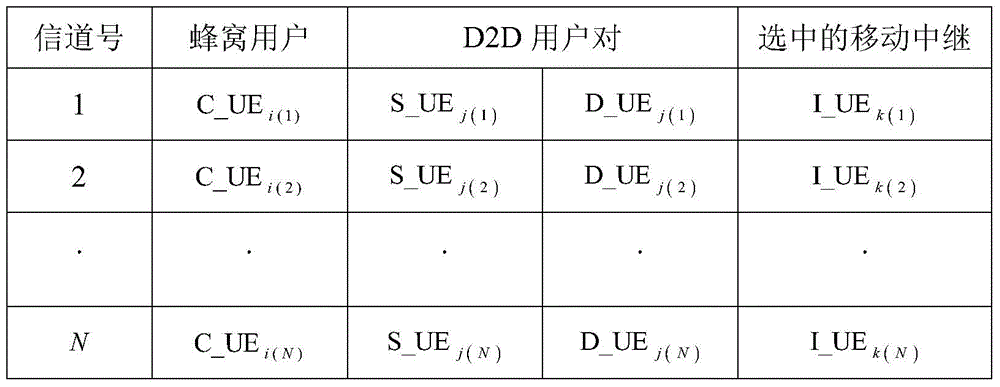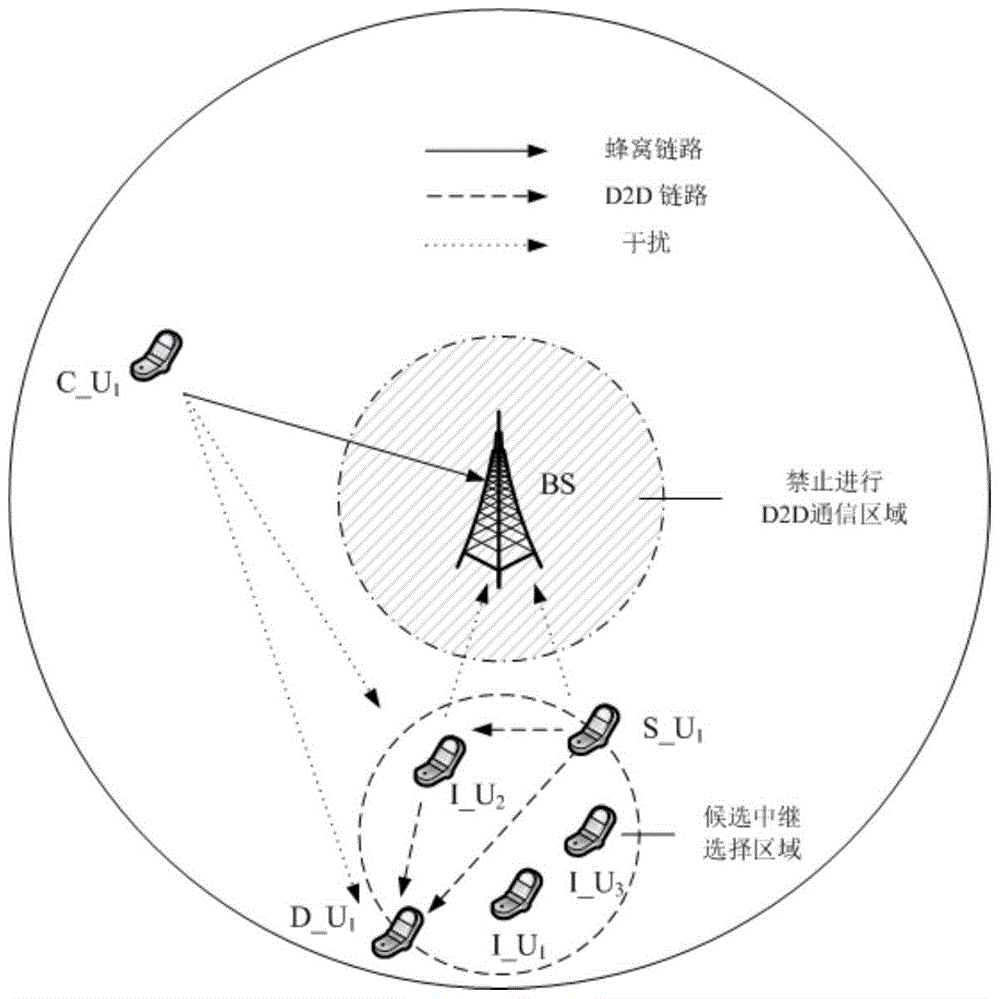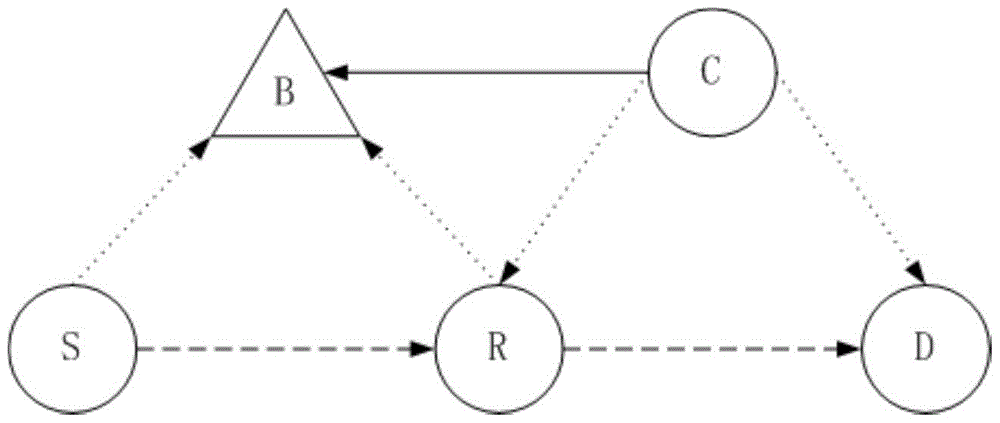A resource allocation method based on terminal direct relay communication
A technology for relay communication and resource allocation, which is applied in the field of resource allocation based on terminal cut-through relay communication, and can solve problems such as complex interference problems and reduced throughput.
- Summary
- Abstract
- Description
- Claims
- Application Information
AI Technical Summary
Problems solved by technology
Method used
Image
Examples
Embodiment Construction
[0068] The D2D relay communication system model of a single cell is as follows: figure 1 As shown, the LTE-Advanced cellular network and the D2D system constitute a hybrid network, where the duplexing mode of the cellular network is time division duplexing (TDD), and the D2D utilizes the uplink resources of the cellular communication in the cell in a multiplexing mode. The main interference is two aspects: on the one hand, the transmission of cellular users will interfere with the reception of D2D users who multiplex the same resource, and will cause interference to the reception of mobile relays and the reception of D2D receivers; on the other hand, the transmission of D2D transmitters and the mobile The subsequent transmission will cause interference to cellular users, that is, interfere with the reception of cellular signals by the base station (BS).
[0069] Consider a single cell scenario, and assume that the inter-cell interference has been properly handled, the cell rad...
PUM
 Login to View More
Login to View More Abstract
Description
Claims
Application Information
 Login to View More
Login to View More - R&D
- Intellectual Property
- Life Sciences
- Materials
- Tech Scout
- Unparalleled Data Quality
- Higher Quality Content
- 60% Fewer Hallucinations
Browse by: Latest US Patents, China's latest patents, Technical Efficacy Thesaurus, Application Domain, Technology Topic, Popular Technical Reports.
© 2025 PatSnap. All rights reserved.Legal|Privacy policy|Modern Slavery Act Transparency Statement|Sitemap|About US| Contact US: help@patsnap.com



